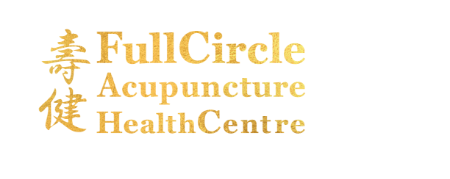Courage is grace under pressure.
—Ernest Hemingway
艾灸 AI JIU - MOXIBUSTION

Is a heating process whereby moxa, ─a dried herb, usually the species of mugwort (Artemisia Vurgaris) ─ is burned, either directly on the skin of indirectly on specific acupuncture points or certain locations of the human body. The processed Mugwort used is moxa-wool in the form of a cone or stick. Some methods of moxibustion include the use of special tools, like moxa stick, roll holders or moxa boxes, but the therapy can also be done with just a moxa roll on the acupuncture points.
Any disease has acupuncture points associated with it and moxibustion therapy is applied to the appropriate points for relief from symptoms. Moxibustion helps stimulate blood circulation, excite nerve centers, and help improve normal body functions to promote healing and recovery from illness.
Moxibustion therapy warms Yang and nourishes Qi, dissolves stasis, and warms and dredges meridians through stimulated warmth applied to the skin on acupuncture points. Moxibustion is one of the most ancient health care methods in traditional Chinese medicine. It has a wide range of applications in internal medicine, gynecology, andrology, dermatology, ear, nose and throat, and other diseases. It is most effective in mastitis, prostatitis, peri-arthritis of the shoulder and other joints of the extremities, pelvic infection, diabetes, and a whole host of other ailments.
 Moxibustion is a versatile therapeutic tool. Moxa leaves have warm medicinal properties by the smoke they produce when burnt. The moxa smoke, together with the heat produced by the moxa fire, warms Qi and blood, warms meridians, expel cold, and warms Yang. The moxa leaf oil in the moxa smoke has good inhibitory effects on staphylococcus albus, group A streptococci, Neisseria, and pneumococcus.[1] Moxa leaf oil excite the nerve centers, stops bleeding and ease pain.
Moxibustion is a versatile therapeutic tool. Moxa leaves have warm medicinal properties by the smoke they produce when burnt. The moxa smoke, together with the heat produced by the moxa fire, warms Qi and blood, warms meridians, expel cold, and warms Yang. The moxa leaf oil in the moxa smoke has good inhibitory effects on staphylococcus albus, group A streptococci, Neisseria, and pneumococcus.[1] Moxa leaf oil excite the nerve centers, stops bleeding and ease pain.
Targeted warmth on the body can improve local blood and lymphatic circulation, accelerate cell metabolism, relieve inflammation, and repair damaged tissues, so that muscles, nerve functions and structures can return to normal. Moxibustion on acupuncture points stimulates the body to condition itself to help treat diseases.
Moxibustion and acupuncture were used in conjunction for centuries, when a disease did not respond to acupuncture, moxibustion was used. The moxa cone is allowed to burn down until the skin turns red, then the ash removed, and a new cone lit; the process is repeated until the treatment is complete. If the moxa burns down to the skin, scarring will occur. Ancient Chinese suggested that the formation of blister was essential if healing was to be achieved, but modern Western practitioners find that moxa need not burn the patient to obtain the desired results.
 Moxa is burned indirectly either above the skin or on another medium placed on the skin. The most commonly used mediums are: salt, garlic, and ginger. Salt is usually placed on the umbilicus (CV8) and the moxa burnt on the salt layer. A slice of garlic with perforations is placed on the skin and the moxa is burned on this. A slice of ginger is used in the same manner as the garlic.
Moxa is burned indirectly either above the skin or on another medium placed on the skin. The most commonly used mediums are: salt, garlic, and ginger. Salt is usually placed on the umbilicus (CV8) and the moxa burnt on the salt layer. A slice of garlic with perforations is placed on the skin and the moxa is burned on this. A slice of ginger is used in the same manner as the garlic.
A common form of indirect moxibustion uses moxa sticks, ─like large cigars or incense sticks─, which are lit and held about one inch (2.5cm) above the point or area to be treated. Small moxa sticks are available mounted on a small cardboard base that has an adhesive surface, so that when stuck on the skin it remains in place and produces indirect moxibustion.
The functions of moxibustion are: a) to warm meridians and expel cold: inharmonious flow of Qi and blood in the human body is usually the result of cold and heat; b) to prevent diseases: if one is to be healthy, moxibustion is to be applied regularly on Zusanli (ST36); c) to induce the smooth flow of Qi and blood: moxibustion is used to induce the flow of Qi and blood upward and downward; and d) to prevent yang from collapse: Yang Qi is the foundation of the human body and the reinforcement of yang with moxibustion will prevent its collapse.
The choice of the kind of moxibustion to be used, either on its own or in conjunction with acupuncture and cupping, should be discussed between the practitioner and the patient prior to treatment.
__________________________________________________________________________________________________________________________________________________________________REFERENCE
─Personal classroom notes. 2005.
-Above Article Written by Dr. Osorio, Gloria DAOM, L.Ac. 2012.
![]()
